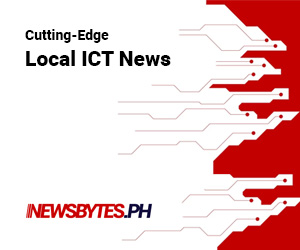Working Chinese technology partner Huawei, mobile operator Smart Communications said it has achieved test data speeds of 1.4 Gigabit per second (Gbps) using LTE-Advanced (LTE-A).

In a series of laboratory tests done this month, Smart said it successfully combined five frequencies or ?component carriers? using ?carrier aggregation? to achieve data speeds in excess of one gibabit per second.
Carrier aggregation refers to the capability of LTE-A to combine two or more radio frequency bands in order to deliver bigger bandwidth and much faster data speeds to mobile users.
Smart said it has joined a handful of operators actively testing ultra-high speed wireless data capacity in anticipation of demand for gigabit-level speeds.
?Through these tests, we have demonstrated that we are constantly looking ahead to anticipate the ever increasing demands of mobile broadband customers,? said Joachim Horn, PLDT and Smart chief technology and information advisor.
?It will take time for carrier aggregation on five frequencies to be deployed, largely because capable handsets are not yet commercially available. But the excellent results of these tests have encouraged us to roll out LTE-A using two or three component carriers which can already be utilized by several handset models in the market,? Horn said.
LTE-A capable handsets include Samsung Galaxy S7, iPhone 6s and 7, and Huawei P9.
?LTE-A is the sharp edge of our efforts to bring high-speed mobile internet throughout the country through our LTE deployment program. LTE facilities, with strengthened transport links, can be quickly upgraded to LTE-A,? Horn said.
Last April, Smart fired up the country?s first LTE-A base stations in the resort island of Boracay. Combining three component carriers, Smart achieved peak speeds of 250 Mbps on a single-user basis in a live network.
Smart?s network on the island currently involves a multi-band LTE setup combining the low-band 850 MHz frequency and the high bands 1800, 2100, and 2300 MHz frequencies. This delivers average speeds of more than 100 Mbps to users with LTE-A capable devices.
LTE-A base stations will soon be activated in major urban areas such as Metro Davao, Metro Cebu, and Metro Manila. This is part of Smart?s three-year plan focused on expanding LTE coverage, to bring high-speed internet service to 95% of the country.
?We are accelerating our LTE deployment because this provides us the platform to deliver faster, more reliable, and affordable internet services throughout the country,? added Horn.
In the three-year network roll-out plan that parent-company PLDT submitted to the National Telecommunications Commission (NTC) last July, Smart said it is focused on rapidly deploying LTE, to make it available to users in 1,551 cities and municipalities across the country by end-2018.
This new roll-out plan includes the use for LTE of the 700 MHz frequency band that Smart obtained access to under a co-use arrangement as a result of the acquisition of the telecoms business of San Miguel Corporation (SMC) by PLDT and Globe Telecom last May.
In addition, Smart is also using the low-band 850 MHz frequency to expand its LTE coverage. Low-band frequencies like the 700 and 850 MHz have longer range and better indoor penetration. These enable Smart subscribers with compatible phones to have strong and stable internet connectivity in more areas, even when indoors.



